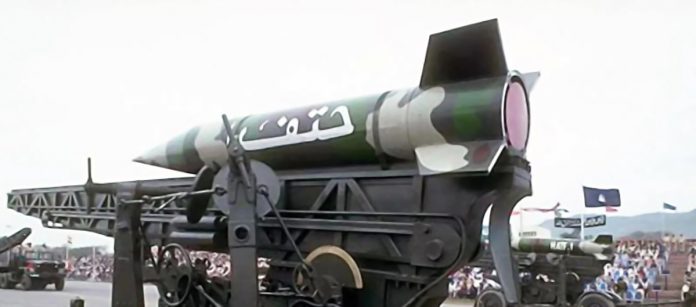Syed Samiullah
The Hatf 1 Ballistic Missile System is the first system developed under Pakistan’s Hatf program (meaning “Target”). It was jointly designed and developed by the Space Research Commission and Kahuta Research Laboratories (KRL) in 1987, and it entered military service with the Pakistan Army in 1992. The Hatf I is a land-based tactical and battlefield-range ballistic missile. Serving primarily as a rocket artillery weapon system, the Hatf I has since been succeeded by its enhanced versions, the Hatf-IA and Hatf-IB.
Development background
The development of the Hatf 1 missile was initially revealed by Pakistani officials during a Pakistan Day Parade in 1989. Its design is believed to have been heavily influenced by external technological assistance, predominantly from France and China.
Variants and upgrades
The Hatf 1 missile system includes three variants: Hatf 1, Hatf 1A, and Hatf 1B. Each variant marks an evolution in the capabilities of the system:
- Hatf 1A: Introduced in 1995, this variant features enhanced range capabilities, extending up to 100 kilometers, and improved accuracy over its predecessor.
- Hatf 1B: Launched in February 2000 and operational by 2004, the Hatf 1B incorporated a rudimentary inertial guidance system while maintaining the range and payload capacities of the Hatf 1A.
Specifications and features
The Hatf 1 missile is characterized by its mobility, tactical utility, and solid propellant fuel system, which simplifies storage, transport, and firing processes. Key specifications include:
- Length and diameter: The missile measures 6 meters in length and 0.56 meters in diameter.
- Launch weight: The launch weight of the missile is approximately 1,500 kilograms.
- Payload capacity: It can carry a single warhead weighing up to 500 kilograms.
- Range: The extended range of both variants, i.e., Hatf 1A and Hatf 1B, is 100 kilometers.
- Warhead options: This system is declared non-nuclear by Pakistan. Although primarily equipped with conventional warheads, it has the capability to be outfitted with chemical or high-explosive payloads.
Propulsion and accuracy
The Hatf 1 uses a single-stage solid propellant rocket motor. However, as the missile is unguided, it should be considered a long-range artillery shell, with the location of the impact depending on the proper direction, angle of launch, and the missile’s ability to fly straight.
Strategic importance
The Hatf 1 missile plays a significant role in Pakistan’s defense strategy, providing a short-range option that complements the country’s broader missile arsenal. Its road-mobile basing capability enhances its tactical flexibility and survivability, allowing for rapid deployment and relocation, which is crucial in maintaining a deterrent posture in the region.
Conclusion
The Hatf 1 missile system highlights Pakistan’s commitment to developing a versatile and effective missile capability. Despite its limitations, the system’s mobility, ease of operation, and range of payloads make it a valuable asset in the country’s military inventory. As regional security dynamics evolve, the strategic importance of maintaining such short-range missile capabilities becomes increasingly evident, ensuring Pakistan retains a credible deterrent and operational flexibility in its defense strategy.
“The author is a Research Officer at Rabita Forum International (RFI) and Associate Editor of Monthly Interaction”.







